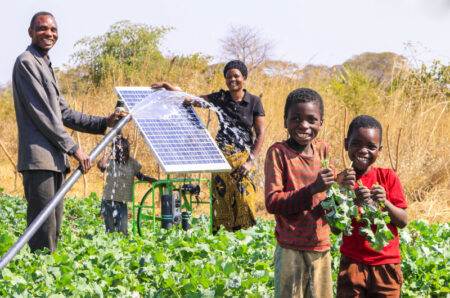- The Kenyan Shilling depreciated against major foreign currencies compared to the corresponding quarter of 2022.
- ICT recorded 8.7 per cent growth, transportation and storage 6.2 per cent, and financial and insurance 5.8 per cent.
- KStatistics agency attributes the growth to a rebound in agriculture, which grew by 5.8 per cent owing to sufficient rainfall.
Kenya’s GDP for the three months’ period to March 31 this year grew by 5.3 per cent compared to 6.2 per cent same period last year. The Kenya National Bureau of Statistics (KNBS) attributed the GDP growth a rebound in agricultural activities, which grew by 5.8 per cent owing to sufficient rainfall.
Reduced activity in major economic sectors such as manufacturing, construction, and transportation hampered the pace of Kenya’s GDP growth – a measure of national economic output adjusted for inflation.
“Most macroeconomic indicators showed upward trajectory during the quarter under review. The performance was evident in the significant increase in export of vegetables and fruits recorded during the quarter in review,” KNBS said in its latest statement.
However, inflation rose to an average of 9.13 per cent from 5.34 per cent in the first quarter of the previous year on the back of significant spikes in food and energy prices.
Also read: Kenya’s Central Bank raises key lending rate to fight inflation
Weak Shilling
In the period, the Kenyan Shilling depreciated against major foreign currencies compared to the corresponding quarter of 2022. Inflationary pressures occasioned by the depreciating shilling hit output in the manufacturing sector, which is heavily reliant on overseas markets for supplies.
This saw growth in the industry decreased to 2.0 percent in the first quarter of 2023, down from 3.8 percent in the first quarter of 2022. On average, the Shilling ceded ground against US Dollar, Euro, and Pound Sterling by about 11.1 per cent, 6.1 per cent and 0.5 per cent, respectively.
“The Kenyan currency, however, strengthened against Japanese Yen, South Africa Rand, Ugandan Shilling and Tanzanian Shilling,” KNBS statement read in part.
Increase in CBK base lending rate
During the period under review, the costs at which consumers accessed loans also went up, as the Central Bank Rate was reviewed upward from 8.75 per cent in February to 9.50 per cent as at March. This is compared to the 7.00 per cent in the first quarter of the previous year.
Broad money supply expanded by 10.4 per cent from Sh4.7 trillion as at March last year to Sh5.2 trillion. The Nairobi Securities Exchange (NSE) share index declined to 1,622.0 points from 1,847.0 points last year.
The current account deficit narrowed by 39 per cent to Sh84.9 billion, from Sh139.3 billion the previous year. According to the statistics body, the 5.3 per cent growth was also on account of significant growths in various sectors which recorded marginal growths.
Performance by sector
Agriculture, forestry and fishing expanded by 5.8 per cent compared to a contraction of 1.7 per cent the previous year. This was attributable to favourable weather conditions that led to enhanced production.
The manufacturing sector expanded by two per cent compared to 3.8 per cent growth in the corresponding year.
“In the manufacture of food products, growth was mainly supported by manufacture of bakery products and processing and preservation of fish which expanded by 15.2 and 7.2 per cent, respectively,” KNBS says.
However, the construction sector recorded a decelerated growth of 3.1 per cent in the quarter under review, compared to 6.0 per cent growth in 2022. The decelerated growth was as a result of declined cement consumption which dropped by 7.7 per cent.
On the other hand, Information and Communication Technology recorded 8.7 per cent growth. Transportation and storage grew by 6.2 per cent while financial and insurance expanded by 5.8 per cent. Wholesale and retail trade recorded 5.7 per cent jump.
“In contrast with the same period last year, where agricultural production contracted, all sectors recorded positive growth, though the magnitudes varied across activities,” KNBS says.
Kenya’s GDP growth performance was as a result of a slowdown in the sector, which is mostly driven by public investment in infrastructure projects.
The sector slowed by half to 3.1 percent from 6.0 percent previously due to lower cement consumption.











